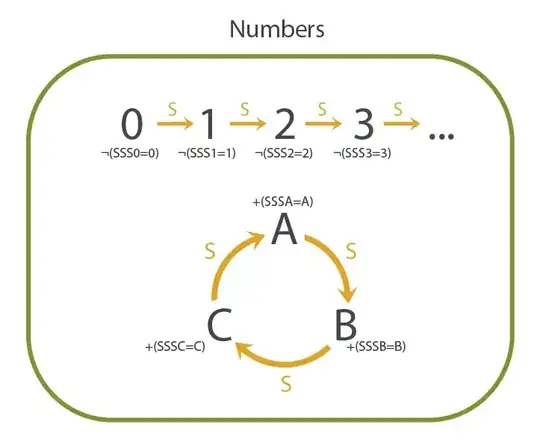I want to know if the usual Peano axioms can really deal with "problems" like the following loop:

I honestly don't see the axioms avoid the last diagram. Thanks in advice.
I want to know if the usual Peano axioms can really deal with "problems" like the following loop:

I honestly don't see the axioms avoid the last diagram. Thanks in advice.
Consider the set of numbers $a$ with $SSSa\ne a$. That contains $0$ and is closed under the successor operator. So it is all of $\Bbb N$.
What about ordering ?
In $\mathsf {PA}$ we can define:
$m < n \leftrightarrow \exists z \ (n=m+Sz)$.
Then, we can prove: $Sn=Sn+0=S(n+0)=n+S0$, and thus: $\exists z \ (Sn=n+Sz)$, i.e. $Sn>n$.
So, $SSSA > SSA > SA > A$, contradicting the fact that: $SSSA=A$.
I understand your point of view Samuel Diaz (the author of the question) because I had the same question: The problem come from the anbigous way to define the 9th axiom of Peano (as you can see it from wikipedia for instance). It must be understood as :
Only N set which satisfy the next truth are really N set: for all set φ (or a unary predicate ie a set) such that: (φ(0) is true, and for every natural number n (belonging to set N), φ(n) being true implies that φ(S(n)) is true) then φ(n) is true for every natural number n.
in other words: N must be a set for which all other sets φ for which (φ(0) and for all n belonging to N: φ(n)=> φ(s(n)) => φ are equal to N.
Indeed in N sets where loop exist, all φ sets which is true for (φ(0) and for all n belonging to N: φ(n)=> φ(s(n) ) (for instance a φ set have all true N numbers and no loops) are not true for ( φ = N) (in this case φ contain only the true n number, and N contains also loops!)